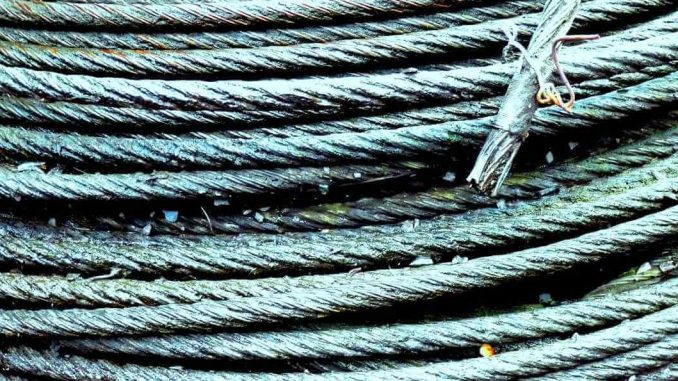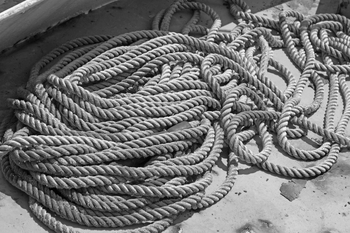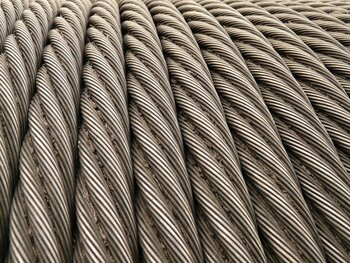
In industries where safety is paramount, the reliability of equipment is non-negotiable. Wire ropes play a critical role in numerous applications, from construction and maritime to industrial settings. Regular inspections are imperative to ensure the integrity of these vital components and prevent potential accidents. In this comprehensive guide, we delve into the intricacies of wire rope inspection, providing insights, tips, and best practices to safeguard both personnel and operations.
Understanding the Importance of Wire Rope Inspection
Wire ropes are prevalent in industries that rely on heavy lifting, load-bearing, and towing operations. These robust yet flexible components consist of multiple strands of steel wire twisted together to form a strong and resilient structure. Over time, wear and tear, environmental factors, and operational stresses can compromise the integrity of wire ropes, making regular inspection a crucial aspect of ensuring their continued reliability.
 Establish a Routine Inspection Schedule
Establish a Routine Inspection Schedule
The first step in effective wire rope maintenance is establishing a routine inspection schedule. The frequency of inspections depends on factors such as the intensity of use, environmental conditions, and the criticality of the application.
High-stress applications may require more frequent inspections, while less demanding environments may permit inspections at longer intervals.
Visual Inspection
A thorough visual inspection is the foundation of any wire rope inspection routine. During this process, operators and inspectors should look for visible signs of wear, corrosion, broken wires, or deformities. Pay close attention to areas near fittings, connections, and points where the rope comes into contact with sheaves or drums.
Use Proper Lighting
Adequate lighting is crucial for a comprehensive visual inspection. Ensure that inspections are conducted in well-lit environments or use supplemental lighting, such as portable lamps or flashlights, to thoroughly examine the entire length of the wire rope. This helps identify subtle issues that might be overlooked in inadequate lighting conditions.
Record Keeping
Documenting inspection findings is essential for tracking the condition of wire ropes over time. Create a detailed record that includes inspection dates, specific areas examined, and any observations or issues noted. This historical record serves as a valuable reference for making informed decisions about maintenance, repairs, or replacements.
Wire Rope Lubrication
Proper lubrication is vital for extending the life of wire ropes. Lubricants protect against corrosion, reduce friction, and promote smooth operation. Regularly lubricate wire ropes according to the manufacturer’s recommendations and industry best practices. Ensure that the lubricant penetrates the core of the rope for comprehensive protection.
Ultrasonic Testing
For a more in-depth analysis of wire rope condition, consider incorporating ultrasonic testing into your inspection routine. Ultrasonic devices can detect internal flaws, such as broken wires or corrosion, that may not be visible during a visual inspection. This non-destructive testing method provides valuable insights into the structural integrity of the wire rope.
Magnetic Particle Testing
In applications where magnetic properties are crucial, such as in magnetic lifting operations, magnetic particle testing can reveal surface and near-surface flaws. This method involves applying magnetic particles to the surface of the wire rope and observing their behavior under a magnetic field, helping identify defects that may compromise safety.
Elongation Measurement
Monitoring the elongation of a wire rope provides insights into its fatigue and potential for failure. Regularly measure the length of a selected section of the wire rope to track changes over time. Unexpected changes in length may indicate internal issues, prompting further investigation and potential replacement.
 Sheave and Drum Inspection
Sheave and Drum Inspection
Wire ropes interact with sheaves and drums during operation, and these components can impact their integrity. Inspect sheaves and drums for signs of wear, misalignment, or damage. Ensure that they are appropriately sized and aligned to prevent unnecessary stress on the wire rope.
Consult Manufacturer Guidelines
Always refer to the manufacturer’s guidelines and recommendations for wire rope inspection. Manufacturers provide specific instructions based on the type of wire rope, its intended application, and environmental conditions. Adhering to these guidelines ensures that inspections are conducted in a manner that aligns with industry standards.
Conclusion
A proactive and thorough wire rope inspection regimen is a cornerstone of safety in industries reliant on these robust components. Regular visual inspections, supplemented by advanced testing methods, lubrication, and attention to operational factors, contribute to the longevity and reliability of wire ropes. By integrating the best practices outlined in this comprehensive guide, industries can ensure that their wire ropes not only meet but exceed safety standards, safeguarding both personnel and operational success. Remember, when it comes to wire ropes, a well-maintained and regularly inspected system is a safe and reliable system.

Leave a Reply